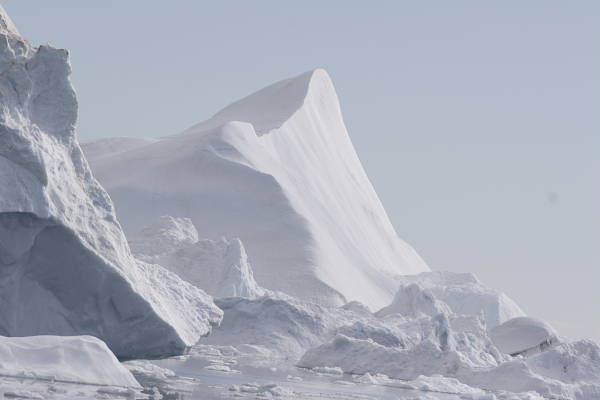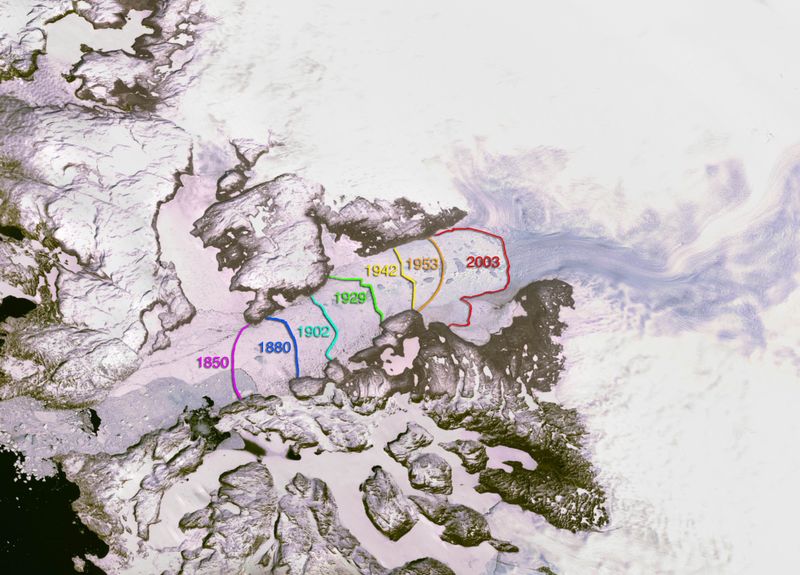Science news: Greenland's melting ice
 Photo: the glacier at Ilulassit in Western Greenland
Photo: the glacier at Ilulassit in Western Greenland
In early September, leaders from the major faiths came together in Greenland to pray for the future of the planet. They may well have chosen Greenland because of the visible and deeply worrying changes in the glaciers and ice fields that cover almost all its vast area. The melting of the ice sheet has speeded up dramatically since 2000.
The state of Greenland's glaciers is critical to the rate of global sea level rise. A complete melting of the island's ice would raise water levels by about 7 metres, enough to flood much of the world's inhabited land. To give one example, 15% of Bangladesh's population would be displaced by a rise of just 1.5 metres. Almost all the country's habitable land would disappear if the water level rises by 7m.
The religious leaders went to the town of Ilulissat on Greenland's western coast. Here a rapidly retreating glacier calves icebergs into a fjord at a rate of 35bn tonnes of water a year. The daily water loss would provide all the water London or New York needs for a year. Estimates suggest that between 6.5% and 10% of all the ice flowing off the interior icefields of Greenland melts into this fjord. This means that the increase in the rate of melt of this one glacier is adding about 0.06mm a year to the global sea level, 4% of the rate of rise during the 20th century.
Of the great threats identified by the IPCC, rise in sea level has always seemed the least threatening. Until recently, scientific consensus suggested that the Greenland glaciers might take 1,500 years to melt completely. The 2007 IPCC Summary for Policymakers suggests that the expected sea level rise this century might only be between about 20 and 50cm. The report notes that the yearly increase in sea level between 1993 and 2003 was double the likely annual rise over the 1963 to 1993 period but, if continued at this rate, still only suggest a rise of 30cm this century.
The increase in flow rates of Antarctic and Greenland ice sheets into the oceans might, the IPCC says, add another 10 to 20cm to sea level by 2100. The IPCC acknowledges that these forecasts may be far too optimistic, saying that the melting of ice sheets is not well enough understood to justify including higher figures for the rate of sea level rise.
The IPCC may need to modify its thinking. The evidence is mounting that the loss of ice from Greenland may well increase sea levels more rapidly than the climate body's models suggest. Most of this modelling work uses estimates derived from calculations about the rate of melting of ice when temperatures rise. Think of this in terms of the melting of an ice cube in your kitchen. Very crudely speaking, the IPCC models calculate the increase in the speed of melting of the ice cube when the kitchen temperature rises. The rate of temperature rise in Greenland has been very rapid by global standards (more than 2 degrees since 1900) but it is still possible to use relatively simple physics to estimate the amount of water changing state from solid to liquid. And it is surprisingly slow.
However, it is increasingly clear that these calculations are not accurately predicting the rapid rate of loss of ice over Greenland. The flow rate of glaciers into the sea looks to be much faster than the existing models suggest. The missing ingredient may well be the increased glacier lubrication provided by meltwater under the ice. In other words, the models may accurately predict the rate of melting of the ice, but they do not capture the impact of the glaciers flowing more easily because they are sliding on a base of water, rather than being slowed by being frozen to rock. This hypothesis is still tentative, but fits well with observations in places like Greenland's Ilulissat glacier where recent increases in flow rates have been visible to the naked eye. The Guardian reported a comment that the glacier is now moving at 2 metres an hour, more than three times as fast as 10 years ago. The effect of the meltwater lubrication is to allow the glacier to calve a much greater weight of ice into the sea each day, where it will eventually flow out of the fjord into the open sea and melt, raising sea levels.
The reporting of glacial change tends to focus on the rate of retreat of glaciers. This is happening at Ilulassit as well. Since 1850, the tongue of the ice has moved over 15 miles back up the fjord. This is important, and is an indicator of climate change, but the speed of flow of the glacier over the ground is a far more profound sign of the possible increase in the future rate of sea level rise.

The IPCC forecasts do appear to be too optimistic. Greenland will take centuries to melt, but we may get a much faster rise in sea level than anybody predicted ten years ago. Perhaps the most worrying thing is the Greenland melt is going to be extraordinarily difficult to stop. The immense thermal mass of the ice on the island gives a huge momentum to the processes of melting and sliding into the sea. And, once again, we are seeing evidence of a tipping point; temperature change unleashing forces that multiply the effect of global temperature rise.